Formal Observations
We will mostly be using the informal observations, but we do have formal ones as well. How are those different?
In a formal observation, do you provide a score or a rating?
Yes, we do. But that's one of the things that makes formal observations so nerve-wracking! Do I have to figure out that number myself?
Not to worry. Let me explain how scoring works.
You won't have to calculate any scores yourself in Observation 360. In a section, weighted indicators can be added up to calculate a score automatically.
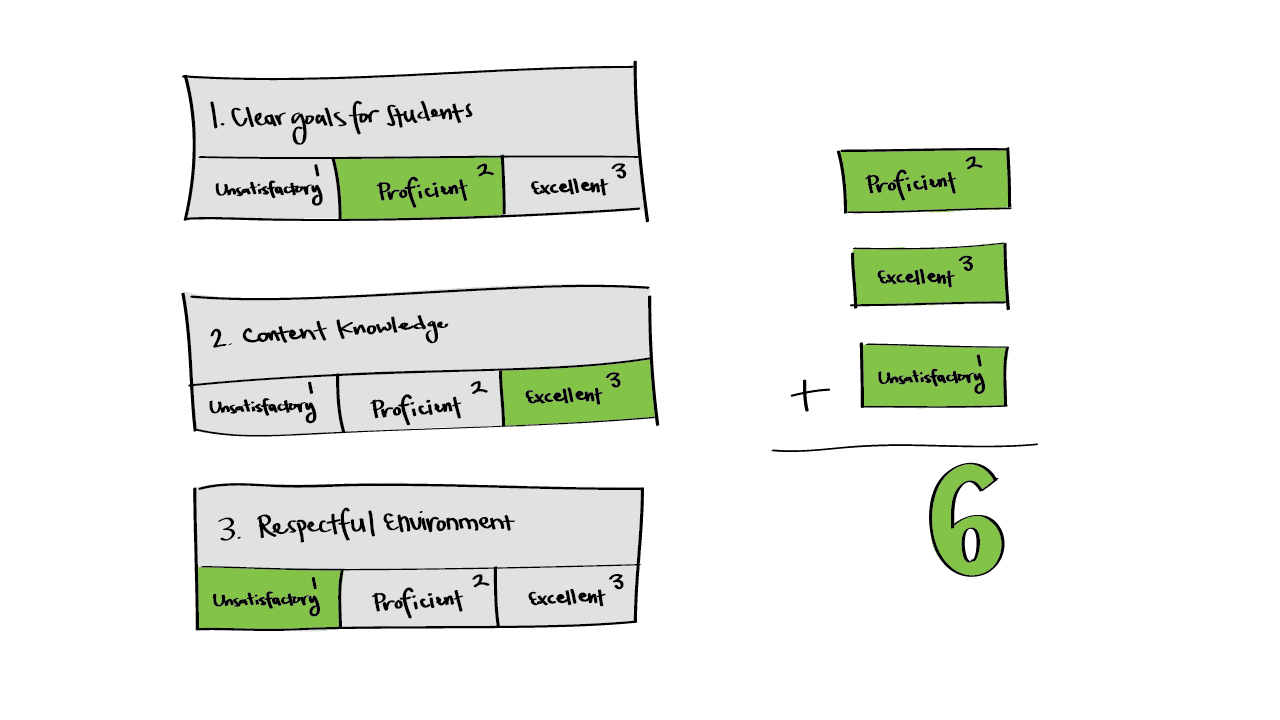
In addition, the sections can be added up to provide an overall score. This is also done automatically, but keep in mind that some sections may have been given more weight in accordance with your school or district policy. So the overall score is a combination of section scores after the additional weight factor has been calculated.

Start a New Observation
Complete the steps to start a new observation with the Formative template for Scott Lansing, an 8th grade ELA teacher at Kuleana Academy.
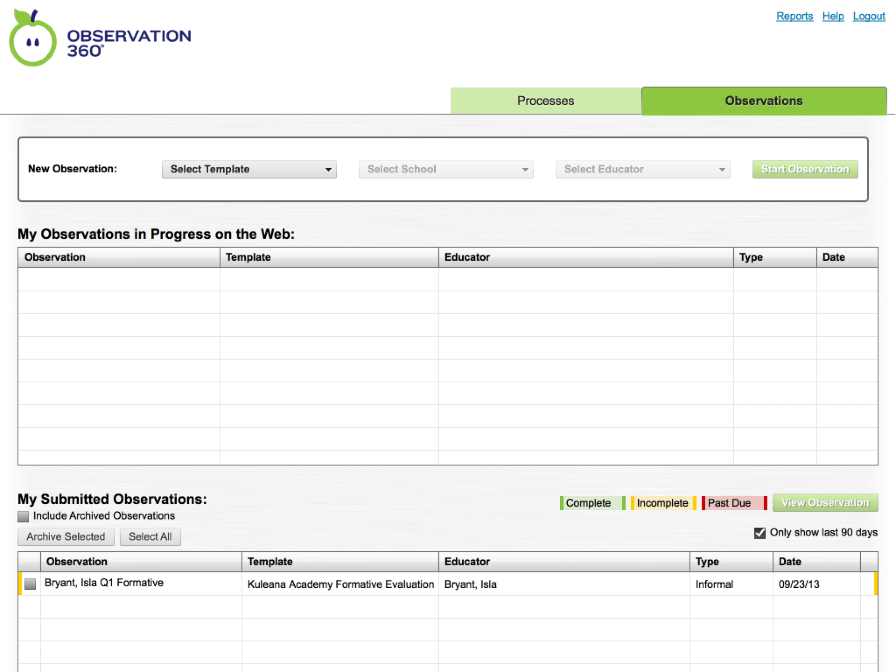
- Choose the template for a annual assessment.
- Select the Kuleana Academy school.
- Select Scott Lansing as the educator.
- Click Start Observation.
- Set the type of observation to Formal.
- Complete the General information by entering a filter for 8th Grade.
- Select ELA as the subject.
- End the setup by clicking Save and Close.
- Very good. You may need to complete other steps as part of your initial setup, but these were the most common changes observers make when starting a new observation.
Weighted Indicators
I think I'm starting to see how I can use this stuff.
You're guilty!
Huh? What?
You stole my chocolate cake out of the faculty lounge freezer! Thief! You're guilty!
You're crazy! You don't have any evidence that I did anything of the kind!
You're right. But you just demonstrated how important evidence can be. And one of the next two indicators helps you record evidence.
Weighted Question/Standard
First, in a Weighted Question or Standard, your ranking of the educator's performance is tied to a numeric score. That score is used in the calculation of the educator's overall score on the evaluation. It works the same way as a rubric indicator, but with a score attached to the rating.
This next type of indicator ...
Wait a second! This is the same indicator.
The icon is the same and it works the same as the weighted indicator. However, you have the added option of selecting from a list of choices to indicate the evidence that supports your rating.
Weighted Question/Standard w/ Multiple Choices
Using a Weighted Indicator
Use a weighted rubric indicator in the Content section of the observation. Then view the final score.
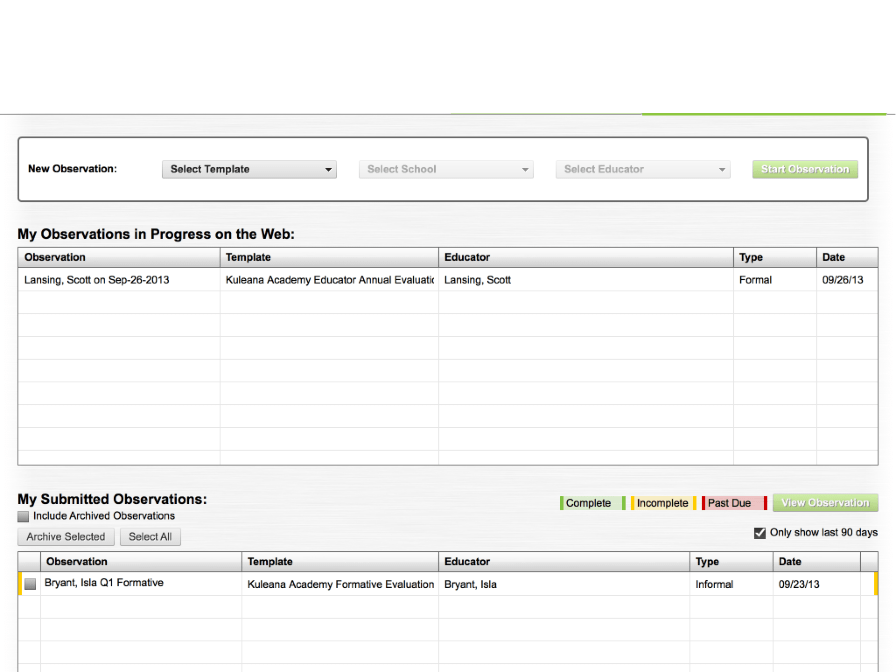
- Click the observation in progress in the My Observations in Progress on the Web list.
- Click the Content Knowledge section of the observation.
- Scroll down by clicking anywhere on the page.
- Tap several categories of the rubric and finish by clicking Select All to check all of the boxes.
- We are going to skip filling out the entire observation so you can see the final score. Click anywhere on the page to view the observation after it has been submitted as final.
- Select the formal observation under My Submitted Observations.
- Click View Observation.
- Click Show Master Rubric to view the category matching the final score.
- Excellent. Now you know how to use a weighted indicator and view the final score.
Switch Roles
I'm curious. What does an educator see after the observation has been submitted?
Let's see, shall we? SHAZAMACADBRA!
What did you do to me?!
Relax! The effect will wear off after you see what our teacher is going to see and understand when they use Observation 360.
And just where is my body right now?
Hmm. I honestly don't know. We better log in and show you right away.
After the observer submits an observation of any type, you will see it appear in the Observations of Me table. You can then click on any of the observations listed.
OK. That's good. It's the first step in turning the process into more of a dialogue.

When viewing an individual observation, you will want to pay close attention to the Prescribed PD Resources. You must complete these in order for the entire observation to be marked as complete.
So that's where the resources display on the indicators.
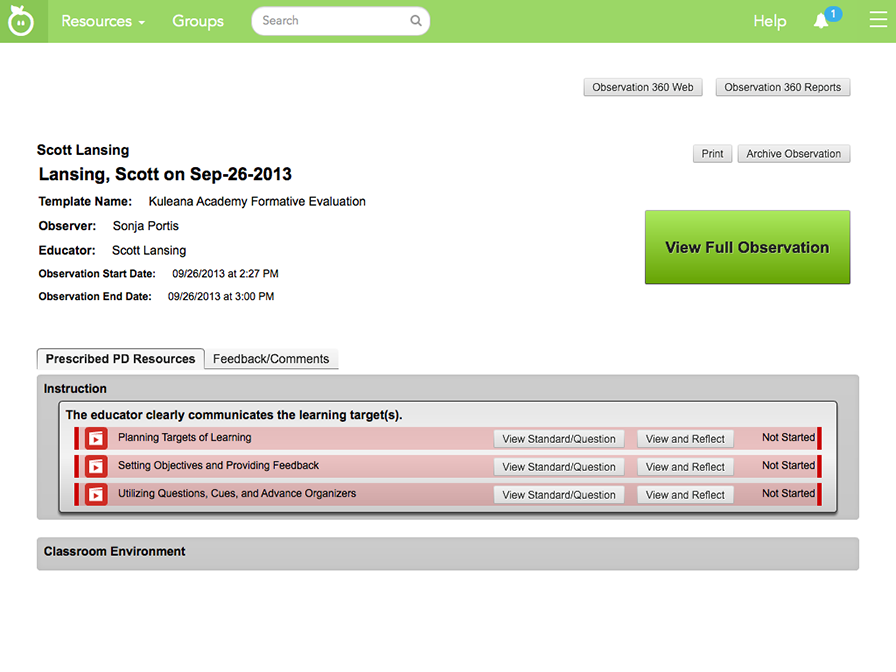
And finally, as you've noted, observations are better when they aren't unidirectional. You can provide feedback or comment on the observation using the Feedback/Comments tab.
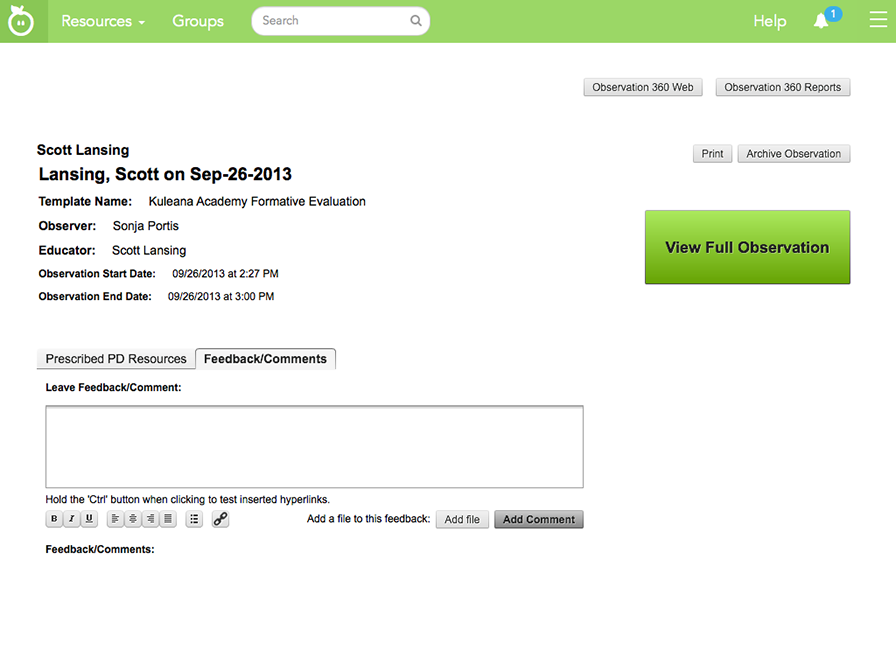
As grateful as I am for showing me what educator's will experience in Observation 360, you better change me back right now!
Right, now what was that magic word again?
Didn't you say SHAZAMACADBRA?
Yeah, that was definitely it. But don't worry. We'll get this sorted out before we talk about reports.
© School Improvement Network, LLC All rights reserved.



